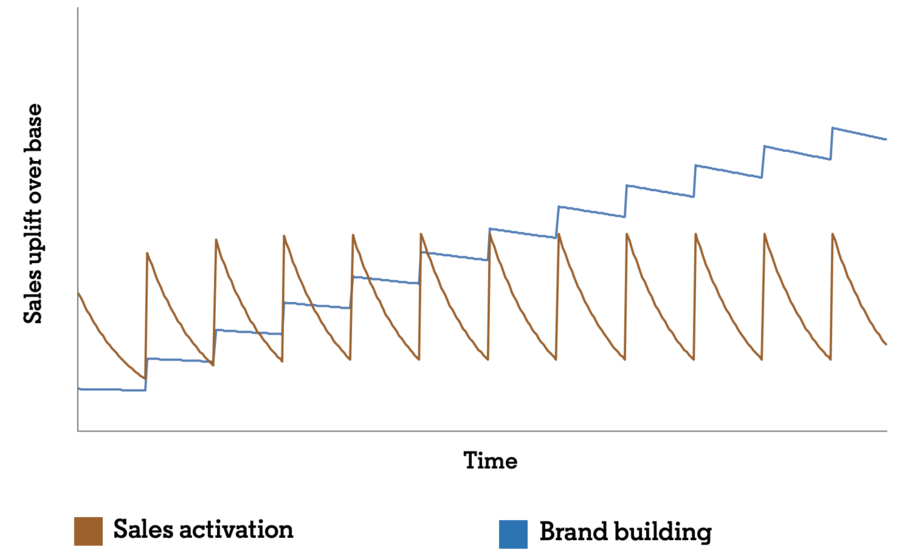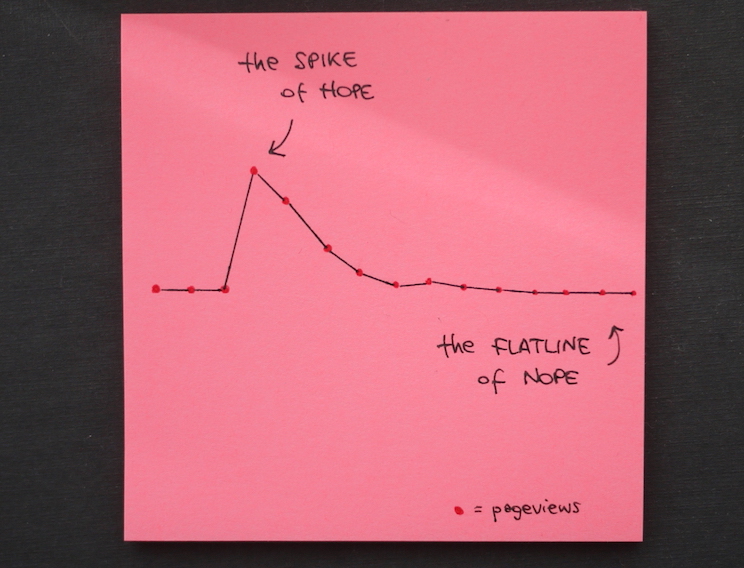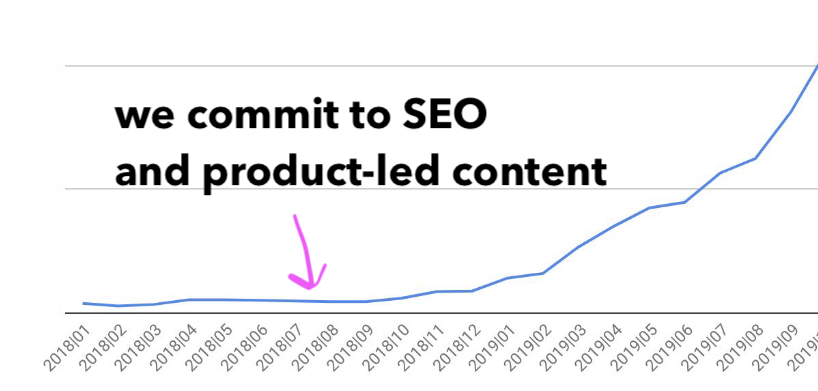Welcome to contentfolks—a fortnightly newsletter with short lessons & ideas about content that makes a difference, sparks action, and truly serves its audience. Thank you for being here!
Hey 👋
A couple of days ago it was June 21st, aka the longest or shortest day of the year depending on where you live—which gives me a very convenient excuse to talk about something that’s been on my mind: the long- and short-term approach to (content) marketing.
The long and the short of it
Most people working in brand management and strategy are familiar with the chart below, but you’re less likely to have encountered it as a content writer, marketer, or strategist. This is Les Binet and Peter Field’s take on the two ways marketing drives business growth, from a 2013 report titled The Long and the Short of It1:

The ‘long of it’, brand building, delivers modest growth in the short term but produces the biggest long-term paybacks
The ‘short of it’, sales activation, generates an immediate result (e.g. sales or sign-ups) but its effects decay quickly
Binet and Field found 60/40 to be the optimum budget split between the two (i.e. 60% of the marketing budget should go to long-term brand building, 40% to short-term activation), and warned against ignoring long-term activities in the pursuit of short-term results:
These new findings reveal the considerable dangers of judging success over the short term and of assuming that it will apply to the long term: it will not.
The final three words are bolded in the report. It’s a pretty strong statement.
Why should YOU care about any of this?
Binet and Field make a compelling case for playing a short and a long game, but most marketers today don’t work like that: CMOs, VPs, and/or clients want to see quick ROI; quarterly budgets and monthly KPIs influence our priorities; only 4% of B2B marketer2 measure impact beyond six months…
…so there’s a high chance that content folks like you and me are spending our time and effort on short-term wins that will never compound or have long-term benefits.
💡 A practical example 💡
In our early content days at Hotjar, the articles we published would get good feedback and decent views as soon as we shared them on social media. But we didn’t have a larger distribution plan beyond this, so we’d send them out into the ether as a one-off… and inevitably, after a few days, the initial traffic spike would flatline in a perfect illustration of the ‘spike of hope, flatline of nope’ concept3:

This is a prime example of ‘the short of it’: being so focused on meeting a short-term goal (X number of pieces/month) that you forget there is a long-term game to play.
After a while, it became obvious that these intermittent spikes were not leading to long-term impact. Binet and Field were right! So we refocused on a strategy where our short-term efforts would compound into long-term growth: a combination of SEO and product-led content. We committed to this approach and worked our ass*s off for months without deviating from the plan:

This is a prime example of ‘the long of it’: growth was slow, but we knew persistence would pay off so we powered through. You can see it in the graph: nothing for a while, small bumps after 3-4 months, a larger jump after 6 months, and hockey stick-style growth for a whole year after that.
But if you’d asked us to measure ROI after the first few months, we would have had to call it a failure. What made a difference was not just long-term thinking: leadership also understood and backed the plan and gave us the freedom to continue without demanding an immediate return.
I often think about Binet and Field’s wiggly lines when I have to make a strategic content decision. They are an easy, visual reminder that small spikes and instant gratification feel great in the moment but may not add up to much over time—and if you’re interested in playing a long-term content game4 with your team***, that’s something you need to be aware of 😉
***speaking of which: I’m forever curious to know how other content folks measure content success. I’ve struggled with this one for so long. If you have 3 minutes to spare, will you email me back and let me know?

Les Binet and Peter Field, The Long and the Short of It. Balancing Short and Long-Term Marketing Strategies (2013). It’s a fairly dense 84-page read that I just condensed in what, 4 lines?, obviously missing 99.5% of its nuance.
B2B Institute, The 5 Principles of Growth in B2B Marketing (2019/20). It’s Binet and Field again!, with a much lighter document. If you’re in B2B, I recommend checking out the introduction at least.
I think it was Rand Fishkin who came up with the concept back in the early 2010s…?
Here’s an article I read recently that has nothing to do with marketing, and everything to do with life → The Surprising Power of the Long Game.